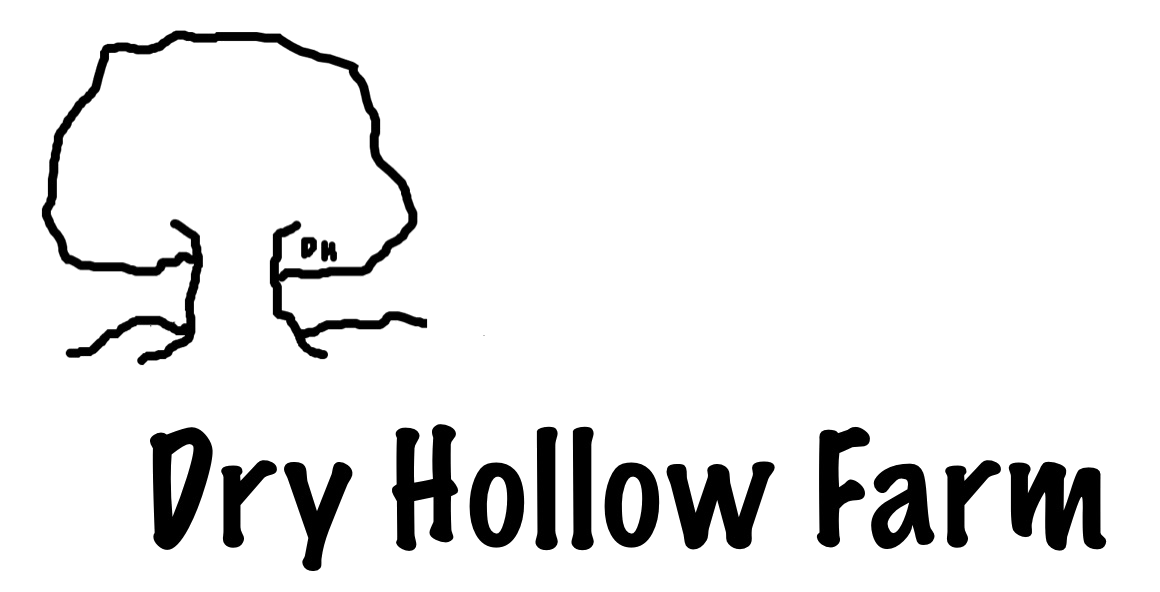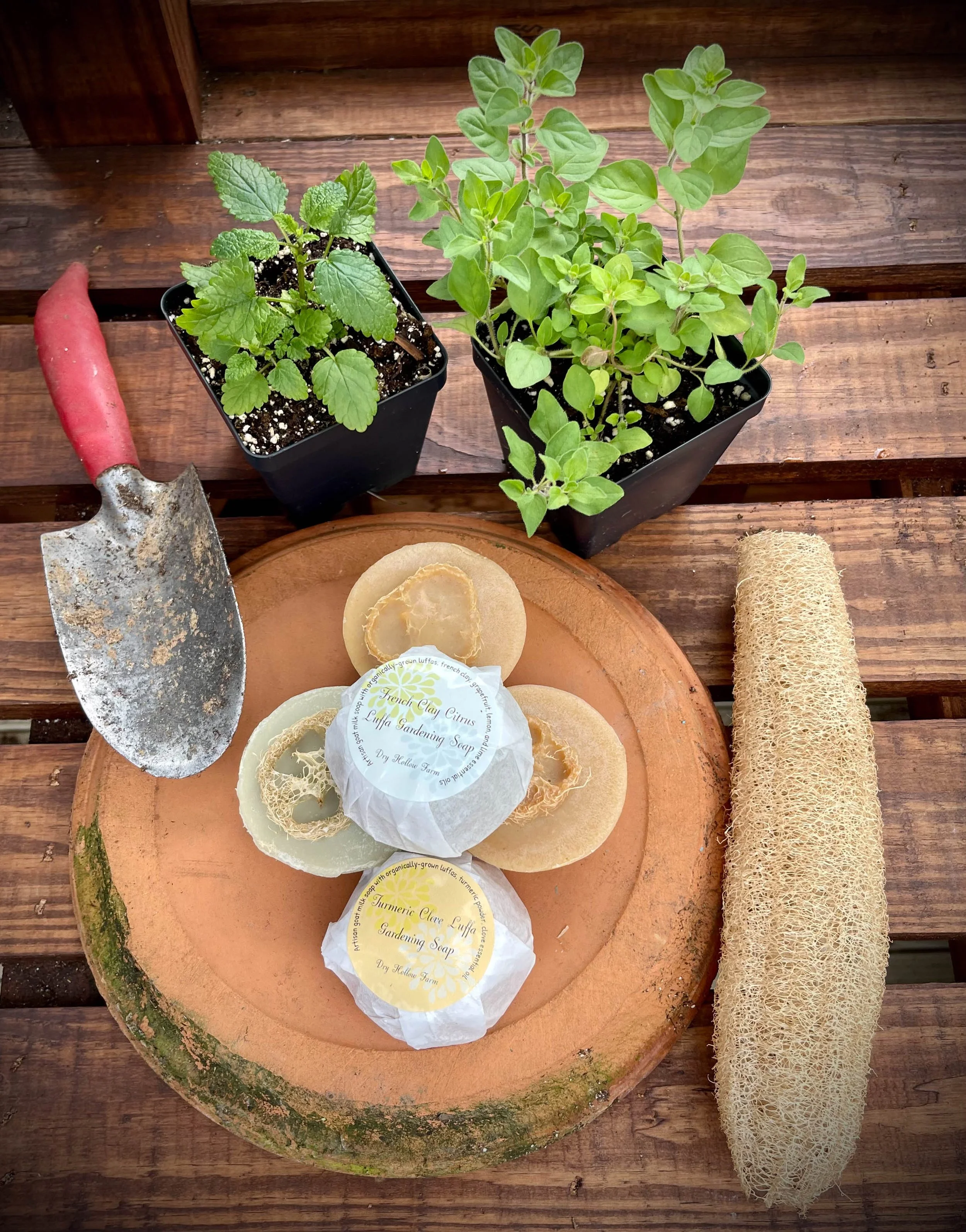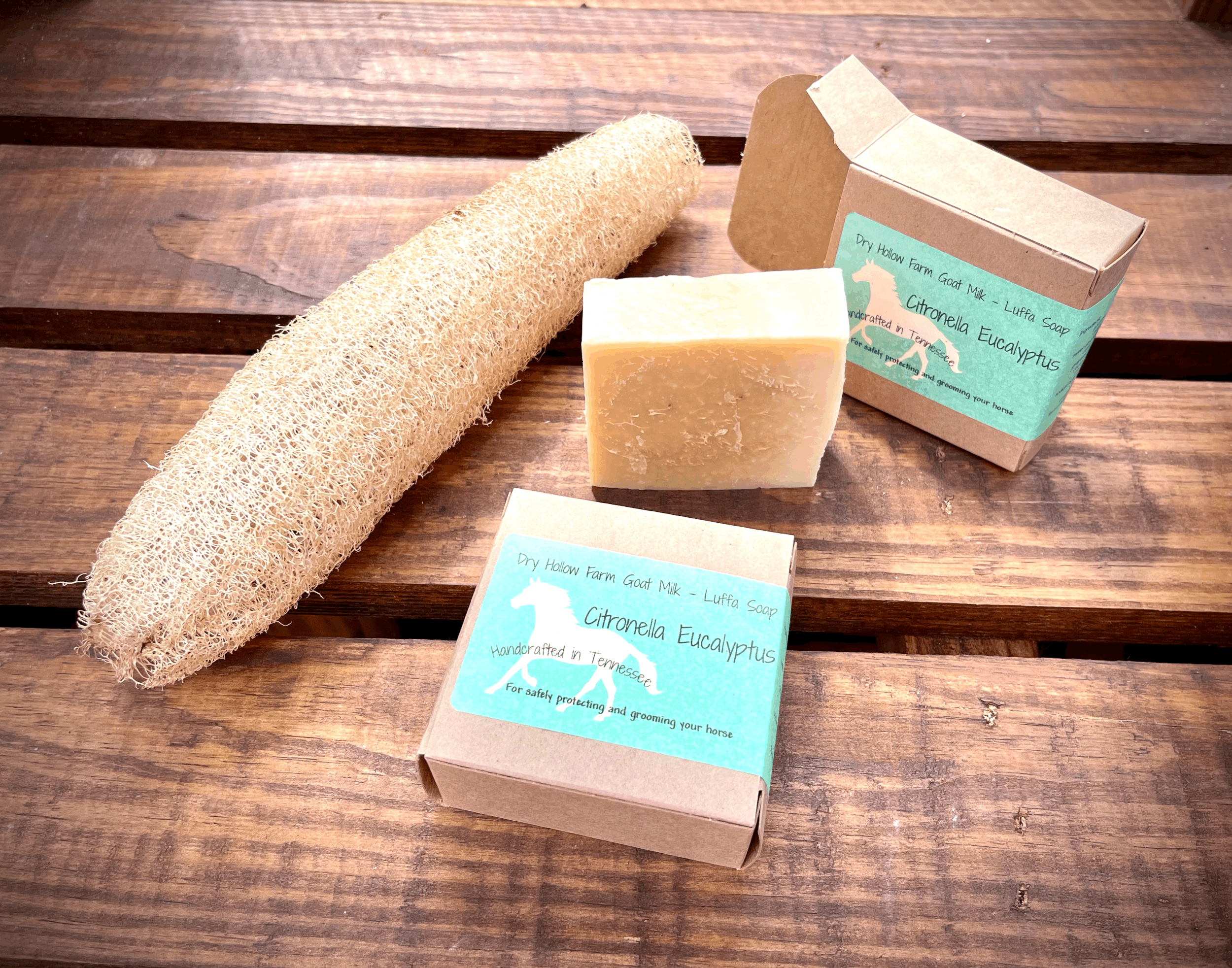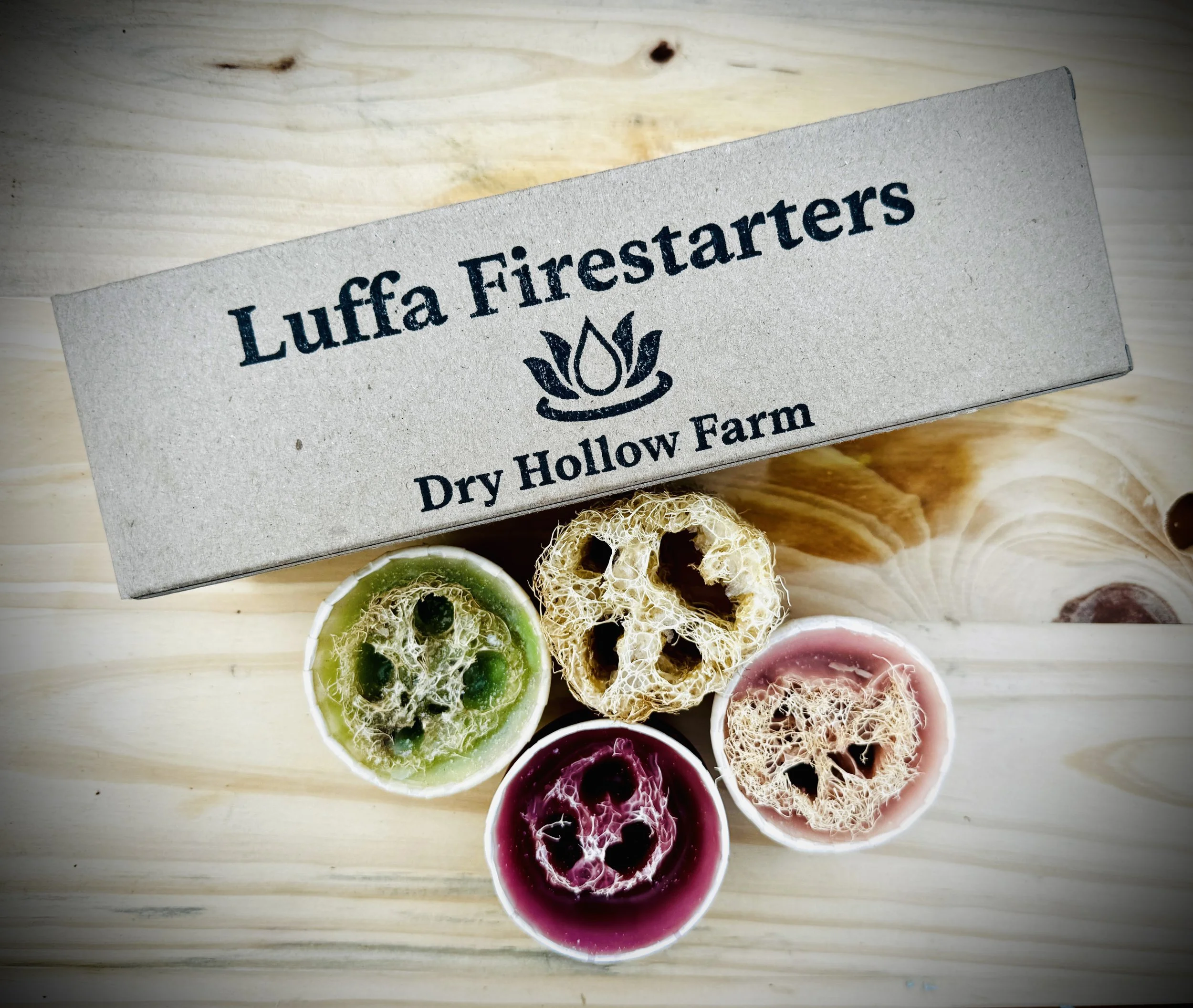The Luffa Production Process
at Dry Hollow Farm
Luffas are members of the Cucurbitaceae family which includes gourds such as pumpkins and squash. It’s a subtropical vine, so climate is an important consideration. Dry Hollow Farm resides in western Tennessee. Although we recently shifted our gardening zone from 7a to 7b, we remain one of the northernmost climes for growing luffas without a greenhouse. For gourd maturation, luffas require 200 frost-free days per year. If our last frost occurs in early April and our first frost in late October, we barely make the maturation window.
Each year we germinate our luffa seeds in a greenhouse in order to expand their growing season. After the last frost, we plant the seedlings along hoop trellises which provide support for vines extending over 15 feet. Luffa vines adore hot, humid summer temperatures and continue producing until we harvest right before the first fall frost. The following spring we plant again using our own seeds.
For almost a decade now, we have repeated the process. We’ve tested several locations and growing strategies, added a greenhouse for early seed propagation, harvested over thousands of luffas, gathered seeds, and dried gourds in various and sundry places around the farm. Next spring we plan to grow commercially and expand from our simple soap-making purposes to wholesale outlets.
How We Grow & Harvest Luffa Gourds
-
Our area of western Tennessee sits at the uppermost region for propagating luffa gourds without the aid of a greenhouse. If directly sown in spring soil, seeds germinate slowly if we experience a cooler, wetter spring. In recent years, we’ve seen snow flurries as late as early April. Other years, we jump into the upper 80s for daytime highs seemingly overnight. For luffa germination, the soil needs to warm up throughout the day as well as at night to produce that very first sprout. Keeping the soil damp also speeds germination.
After our first few years raising luffas, we purchased a lean-to greenhouse to push for earlier seed germination. With windows facing the western sky, the greenhouse promoted quick sprouting of seeds in the warm planting soil.
-
Full sun is imperative for healthy luffa plants. Although occasional water is important if a drought period occurs, these gourds thrive in open sunlight, and the hotter, the better. We choose locations that are well away from other plants because these critters will overtake everything within twenty feet in any direction. They require a large amount of dedicated space, and neither vines nor gourds can lie directly on the ground. This will cause immediate rot if the ground is damp, whether from rain or overnight dew. For this reason, we design trellis systems appropriate for their rapid and expansive growth of the luffa plants.
-
The presence of buzzing bees and other insects among our luffa vines is the best predictor of successful pollination. Luffa plants adore hot temperatures for flower production and pollination. Large, bright yellow female flowers emerge on each stalk if the soil contains sufficient phosphorus. These are surrounded by clusters of yellow male flowers that require adequate nitrogen to appear. If we discover our plants are lacking one of these sets of flowers, we sometimes add phosphorus or nitrogen to promote flower production. Another factor is weather conditions. Although luffa vines love the hot, humid temperatures of summer, excessive rain may encourage early rot for flowers and emerging gourds.
-
The earliest we harvest a luffa gourd is when the outer rind is just beginning to turn a splotchy, light brown. This means that the gourd is drying out inside. If the drying process is far enough along, the luffa will emerge whitish-beige, soft, and pliable for a gentle, exfoliating bath aid.
A second time for luffa harvesting is to wait a few more weeks until the entire luffa husk has turned a light shade of brown. Feel the gourd. It is surprisingly lightweight. When de-husked, the luffa is also a light brown color and stiffer than a gourd harvested at an earlier stage. This gourd creates a deeper exfoliating experience and may also be used for light cleaning activities. It will soften some when exposed to water. This is the stage we like to harvest for soapmaking, especially for our pet shampoo bars.
Our third option for luffa harvesting is to allow the gourds to remain on the vine until the husk turns a dark shade of brown and all water has disappeared. At this point, the luffa inside is a darker color and very scratchy. This is also the stage for harvesting seeds. -
For most of our luffa gourds, we soak them in bins with a weak water solution of bleach and dish detergent. This soaking removes the creepy-crawlies that are present on any harvested plant or fruit. After soaking, we do a brief rinse with cool water, then spread the luffas somewhere to dry. Once completely dry, luffas can be stored indefinitely in any dry location.
Our Luffa Products
Soaps
-
These luffa goat milk soaps are created with farm-raised luffa sponges that provide natural, gentle exfoliation. Our bars of soap are 22% goat milk and also include our blend of olive, coconut, palm, grapeseed, castor, and sweet almond oils for nutrients and antioxidants that nourish all skin types. Our hand-crafted bars of soap produce rich, creamy lather for healthy skin from head to toe.
-
We love to use these soaps after time spent in the garden when we need extra, gentle cleansing to rid our hands of dirt. Our goat milk soap begins with our flock of Nigerian Dwarf and Oberhäsli dairy goats, raised on pasture and browse to produce sweet, creamy batches of milk with 8-10% butterfat content.
Shampoo Bars
-
These pet shampoo bars combine two of our natural, skin-healthy products: raw goat milk and organically-raised luffas.
Our organic, farm-grown luffas add an exfoliating experience for pets, and in conjunction with raw goat milk, promote healthy skin while providing a gentle and eco-friendly cleanse. We use only a weak bleach solution for basic removal of bacteria after harvest, so natural luffa coloration remains without harsh chemical use.
-
This soap does not contain fragrance oils and only uses essential oils. While essential oils are safe for horses, please be aware that some horses can be sensitive to oils. If your horse shows signs of sensitivity, discontinue use.
Firestarters





